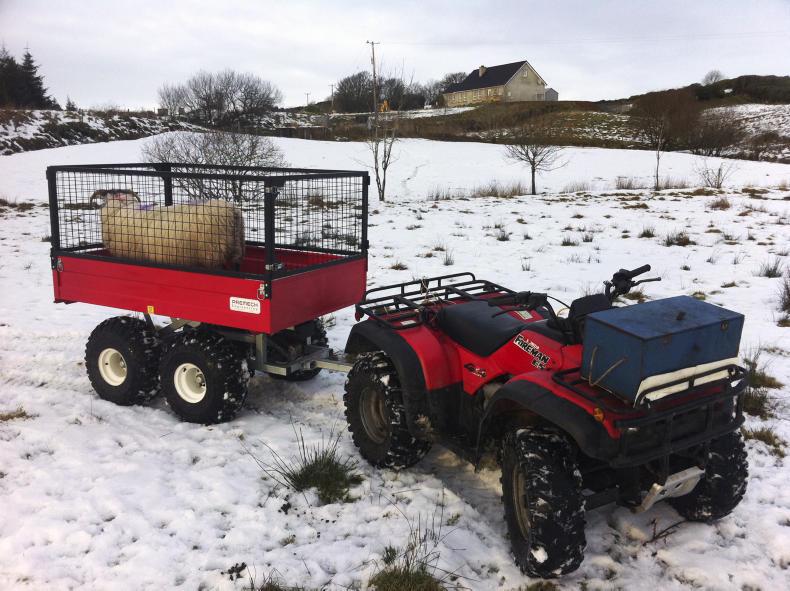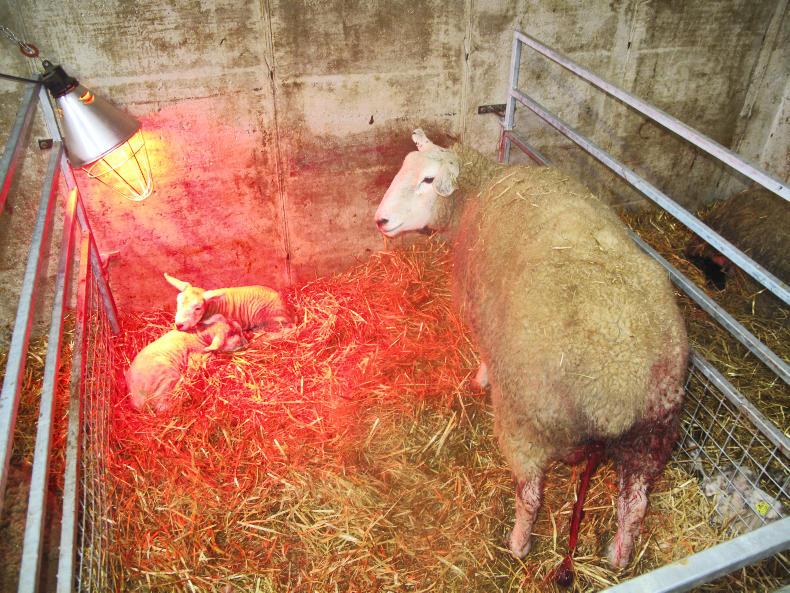Spring is the busiest time on many farms, with lambing, calving and sowing tillage crops very demanding on time. It is well known that a high percentage of farm accidents occur when farmers are under intense pressure and it feels like there are not enough hours in the day to get jobs done.
Putting advance plans in place and making changes to current management practices will not eliminate all dangers, but it will certainly cut down on the risks involved. Here the machinery and livestock teams have selected some of the most common hazards that may be present during lambing.
Top tip from ESB Networks
A high percentage of tasks will be completed late in the evening or during the night. Adequate yard and shed lighting goes without saying. Obstacles should also be removed from the commonly used pathways from the house to the sheds. These may be easy to notice during the day or late in the evening but may not be as straightforward to navigate at 3am in the morning. In particular, equipment such as bale spikes, shear grabs etc should be parked well out of the way with sharp objects against a wall for example. This is particularly important where there is help coming onto the farm that may not be familiar with surroundings. A good torch or head lamp is also essential, particularly if walking in poorly lit areas.
Sockets, wiring and infra-red bulbs
Infra-red lamps are present on practically all farms. A great aid in warming lambs, they also present a safety risk. Lamps should never be used without a safety guard in place. Where using in a pen with a ewe and her lambs it is important that lamps are hung securely and cannot be knocked against a wall by the ewe. Check wiring for any damage and make sure the power supply is sufficient, with safety sockets and a working fuse board in place. Never overload sockets with multi-way adapters. Where a cable drum extension lead is being used, it is important to make sure that it is fully rolled out to prevent overheating.

Don’t take chances with a quad
Quads or ATVs have been a lifesaver on many farms in greatly reducing labour. This is provided that they are used in a safe manner. Ahead of lambing is the ideal time to carry out a service. Most accidents are reported with quads going too fast, travelling over uneven or dangerous terrain or overloading leading to a weight imbalance. Avoid taking risks, wear a safety helmet and consider investing in a quad trailer where there is a requirement to move animals or equipment. Where younger members of the family or students not accustomed to using a quad are helping, spend time in making sure they are comfortable operating it and do not ask them to drive in areas that present a risk.
Hidden risks of straw
It cannot be stressed enough the importance of not skimping on straw usage from a point of view of hygiene for animals. Farmers should not forget about their own welfare. Conditions for baling straw were far from ideal last autumn, with a knock-on effect of a greater risk of dust, mould and harmful spores present when shaking straw. Appropriate respiratory masks and gloves should be worn where required. Where using straw blowers, take care that equipment is free of defects and the PTO is in good working order. Be careful in freeing blockages or stones and never attempt to interfere when the machine is running.
Zoonotic disease
Toxoplasmosis is the standout disease at lambing due to its risk to pregnant women. The disease causes abortion in sheep and can pose a similar risk to humans. Pregnant women should avoid working in a lambing shed or coming in contact with materials used. This includes clothes worn during lambing and farmers should ensure they have washed thoroughly before coming in contact with pregnant women. Operators should wear gloves or where not wearing gloves ensure hands are washed immediately with warm soapy water that ideally contains a suitable disinfectant such as Dettol.
Consider weight before lifting
Pregnant ewes can weigh up to 80kg to 90kg in late pregnancy. As such, care should be taken when handling ewes to prevent injury to farmers and animals. Always consider the weight of loads before lifting and remember to lift safely, with both knees bent. Where moving freshly lambed ewes take care of over-eager ewes running against you and putting you off balance.
Put operator safety first
Certain tasks may seem like they cannot be delayed, but consider the implications of getting injured by not looking after yourself and ending up out of action. It is important to get rest during peak activity, eat well to keep energy levels up and make use of available help. Can employing a student help take the pressure off for a period or are you making the best use of family help at weekends? Simple things like letting someone know if you are going away from the house or getting up at night are important so that if an accident does occur people will know where you are.






 This is a subscriber-only article
This is a subscriber-only article









SHARING OPTIONS: